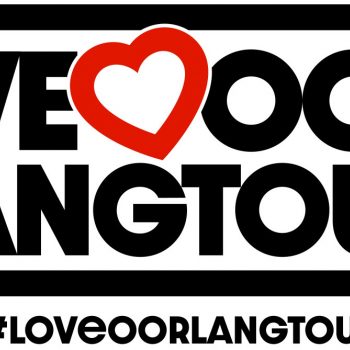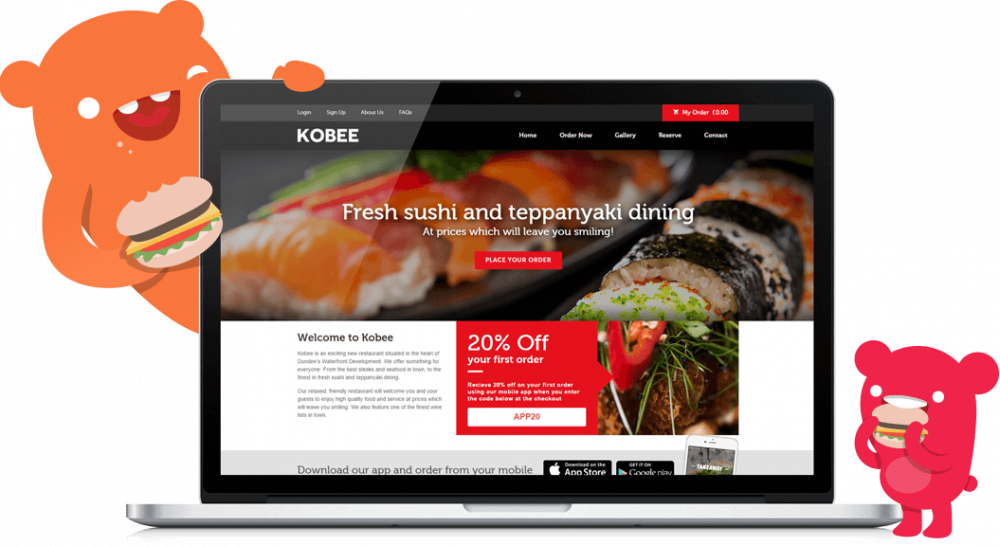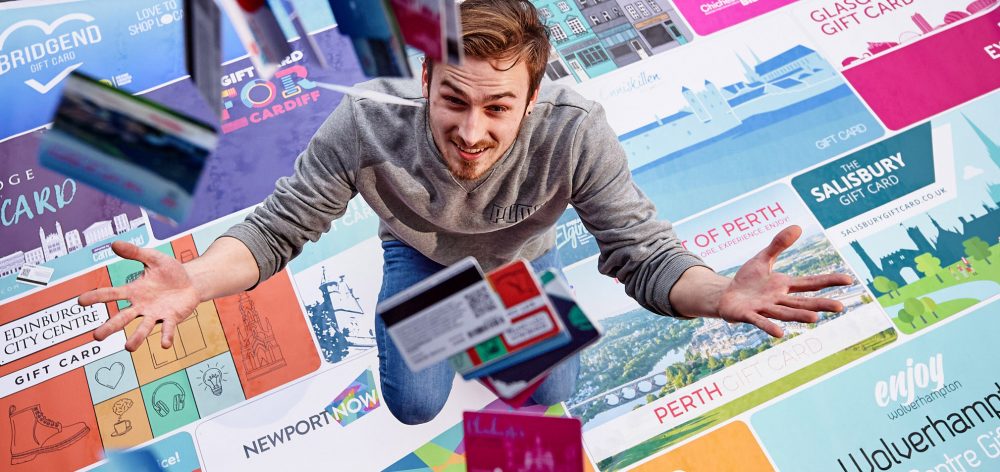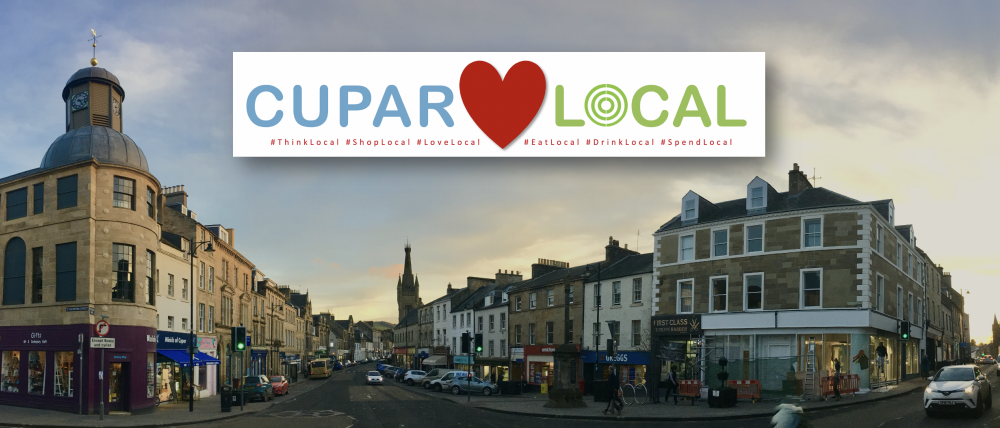Go digital
We all spend an increasing amount of our lives on smartphones and mobile devices - not only to communicate socially and professionally, but to find out what’s on, fix travel and carry out transactions. Digital technology is changing our society and the way we live. It is changing the way we communicate, how we buy and sell goods and services, how we learn and how we organise our lives.
For town centres, digital technology is changing how individual businesses and town centres communicate with their customers, and their understanding of their customers’ behaviour.
The speed of change of digital technology is both a challenge and opportunity. It’s a challenge to keep up with the speed of change - but also an opportunity to connect with your customers, understand what they think and bring them to your town centre.
Check out these cutting-edge examples to see how digital could support your town centre.

“Shop local” web platforms
One of the biggest areas of expansion for digital services supporting town centres is online platforms – websites and apps – which help local businesses reach their customers online. The demand for home delivery and click-and-collect grew hugely during the COVID-19 pandemic, and platforms like Scotland Loves Local, ShopAppy and Hungrrr evolved specifically to support town centre businesses offer these services at zero or minimal cost.
Click here for more information on town websites and digital apps on the Scotland’s Towns Partnership website.
Hungrrr: St Andrews
Business Improvement Districts like St Andrews bought into Hungrrr, an online food ordering and delivery platform where all the income went straight to the local business – who didn’t lose out to the often high rates of commission that some other platforms charge. Hungrrr originally started in Dundee, and allowed towns to create their own bespoke webpages.
Other very local delivery services have since established too, FalkirkEats for example, offers a 'local way to takeaway'.

In St Andrews, the #LoveStAndrews Marketplace app provides a marketplace for all local businesses who already offer, or want to offer, delivery or click-and-collect. Launched during Covid-19 restrictions, the app is being expanded from Hungrrr’s original focus on hot food delivery to include all sectors and services. The aim is to drive revenue streams, save jobs and ensure that businesses survive in the long run.
For more information, contact BID St Andrews.
Loyalty cards and gift cards: Perth
Link your existing credit or debit cards with the MiRewards scheme in Perth, then simply shop, use public transport, go for a meal, get your hair cut, go for a swim, or see a show in any of the 70+ businesses that are part of the programme. You’ll automatically earn MiPoints, which can be converted into free Perth gift cards, as well as being eligible for monthly prize draws, VIP tickets and random monthly acts of kindness!
Since the scheme was launched in 2018, over 2,000 Perth residents (4% of the population) have registered. Over £500,000 of local spend has been tracked. The involvement of Stagecoach East means that residents can tot-up points simply by using the bus, which generates valuable insight into consumers travelling by bus.
For customers, the scheme enables them to support town centre businesses and enjoy great perks without the hassle of extra loyalty cards. For businesses, the scheme drives footfall and allows them access to data about detailed customer behaviour in real time. And because the scheme gives perks and prizes rather than discounts, it means that businesses don’t need to give away any margin to participate.

The top 10% of users (by revenue) generate 49% of total spend, tend to be 45 or older, and spend an average of £36. The bottom 10% of users tend to be in the young age groups; they generate 0.4% of total spend, with an average value of £4.70. The scheme also generates a whole host of more detailed anonymous data on spend by time, geography, consumer profile and business sector, which helps businesses and the local authority to plan for the future.
The scheme is run by Miconex, who are based in Perth. They operate prepaid gift cards and local currency programmes in over 40 towns and cities around the UK. Over a quarter of the gift card programmes are based in Scotland, from Kirkwall and Elgin to St Andrews and Milngavie. Over the period 2018-2020, over £400,000 has been kept in these local economies, supporting nearly 1,000 local businesses.
An extra dimension is the ability to set up local Collection Pots, enabling local communities and social networks to collect money online and then load the funds onto local gift cards. In Milngavie, for example, the local Improvement District is rewarding care workers by setting up Collection Pots and gift cards for individual care providers. This will allow local folk to recognise key workers whilst supporting the local economy. No more office collections or group collections where someone always forgets to pay!
Scotland Loves Local
Scotland Loves Local is the campaign putting localism at the heart of a stronger, greener, fairer Scotland. It is a galvanising force for good, bringing the businesses, community organisations, politicians and the public to collaboratively create better places in which to live, work and visit. The foundations of true economic and environmental sustainability lie in our local communities.
Developed by Scotland's Towns Partnership with support from Scottish Government and a range of partners, the website is home to the Scotland Loves Local campaign – by encouraging people to Choose Local, the campaign represents the beating heart of positive change – responding to the cost of living crisis, the climate emergency, long-term coronavirus recovery and building a better future.is a great resource.
See how Scotland Loves Local supported Living Lerwick BID with funding provided by Scotland Loves Local via the Scottish Government, post Covid-19.
The Scotland Loves Local Gift Card is a major element of Scotland Loves Local. It launched in 2021 and is so much more than a Gift Card. It is a commitment to your community and a tangible way to inject money into your local area. Find out more and sign up here.
Online community sharing: Go Get Gorbals

Need something for your project, home, event or work? Have a skill or thing which you can offer your local community? Need or have a space that you can share?
Go Get Gorbals provided a website and app for local people to exchange skills and things in their community. It was developed by New Gorbals Housing Association and icecream architecture.
It was free to join. People created a simple profile and can then begin exploring what their local community had to offer. They could swap “haves” and “needs”, ask to join organisations or projects, or start their own and find people to join them. Everything available on the site was offered for free!
Connecting communities at the hyper-local level, and sharing what they have, helps with climate change, community empowerment, economic development, skills, culture, health and well-being.
Digital Towns Guidance and Public Wi-Fi Toolkit
The fast past of technological change means that it’s very difficult to suggest good examples and tools for the future of our town centres. However Scotland's Towns Partnership has published two guides which seek to help organisations develop digital portals and services for town centres: a Wi-Fi Toolkit (2020), and Digital Towns Guidance (2017). Read more below.
Wi-Fi Toolkit for Scotland's Public Bodies
Published November 2020, this report provides public bodies with a best-practice Wi-Fi toolkit, containing pragmatic guidance on how wireless connectivity schemes can be designed and deployed.
The contents include:
- the benefits of public Wi-Fi schemes, drawing upon digital town case studies.
- the challenges of deploying public Wi-Fi schemes.
- an overview of additional factors that need to be taken into consideration.
- a summary of best practice delivery models for future wireless schemes.
Read the WiFi Toolkit report here.
This report was written by Intelligens Consulting Ltd. The report was commissioned by Scotland’s Towns Partnership on behalf of the Scottish Government, with input from Boston Networks.
Digital Towns Guidance
Digital placemaking is in its infancy. Digital Towns Guidance, published by Scotland’s Towns Partnership in 2017, explains the challenges in more detail together with information on case studies at the time, including:
- Auchterarder: community-led broadband and town Wi-Fi, with information on outcomes.
- Clarkston, East Renfrewshire: low cost website and social media to support local businesses, managed by the local Business Improvement District. The report has information on the project’s costs, impacts and challenges
- Elgin: digital destination marketing using website, ebulletins, blog and social media. Information on costs, impacts and challenges can be found in the report.
- Fort William: town website, with information on impacts, costs, challenges and future developments.
- Milngavie: public Wi-Fi and town app, with information on outcomes.
- Paisley: public town centre Wi-Fi, with explanation of how the project was developed.
- Perth: implementing a holistic digital strategy to promote local businesses via a website, social media and gift card. The report explains some of the costs, impacts and challenges.
- St Andrews: heritage app, with information on costs and challenges.
Common lessons from these case studies are:
- The starting point should always be to audit and build on what you’ve already got.
- Think about what you’re trying to achieve.
- Hard infrastructure isn’t usually the main challenge, but skills and deployment.
Digital Improvement District: CuparNow
In 2018, Cupar was chosen as a demonstration town to prove the concept of a Digital Improvement District under the Scottish Government's Digital Towns Programme 2017-18.
The idea of a Digital Improvement District was based on the need for a digital approach to deliver support to a range of audiences: residents, visitors, community groups, culture and tourism bodies, education and training providers, environmental projects, and health and social care partnerships. The overarching ambition was to create a sustainable digital model, one that would enable a town to deliver all the desired services, removing the need for ongoing applications for funding support from local, regional or national government. The initiative had the unanimous support of the town's business association, ABCD.
The demonstration phase ran for 15 months (from September 2018) until a ballot in December 2019. In line with the Business Improvement District legislation, the ballot gave every non-domestic rate paying business and organisation in the town the opportunity to vote on the initiative.
In campaigning for the support of businesses and organisations, a detailed business plan was published providing a full breakdown on how each £ of the collected levy would be invested (see page 23). The largest proportion (35%) is allocated to the management of integrated, digital communication. The next biggest budget items, each with 12% of the budget, are the free Wi-Fi service, the managed Blog (with categorised listings, map and events calendar) and the weekly face-to-face visits to local businesses by CuparNow’s ambassador.
Businesses gave their backing by a majority of both number and rateable value voting. The successful ballot resulted in the creation of the UK and Scotland's first Digital Improvement District: CuparNow that ran for five years (2020-2025). The annual levies for businesses and organisations varied from £0 to £2,000, depending on each property’s non-domestic rateable value, generating around £80k annually to fund the Digital Improvement District.

The Digital Improvement District delivers integrated digital communication and services seven days a week between 8am and 10pm. Digital channels - including the core channels of the Blog, Facebook and Instagram with supporting channels of Twitter, YouTube, TikTok and LinkedIn Local - are fed with content that is captured and gathered from the town's businesses and organisations, including through a project ambassador who undertakes face to face visits to engage with businesses before content is published.
CuparNow also provides free public realm Wi-Fi in the town centre. By late 2020, this had been used by more than 13,000 visitors with over 1,000 of them subscribing to receive regular updates on what the town has to offer. The service also captures key data which helps to understand visitors’ demographics, home locations, times and lengths of visit.
When the Covid-19 lockdown was announced, CuparNow came into its own. Delivery continued seven days a week and was able to provide support to multiple audiences across the town and Cupar's wider rural catchment. The Digital Improvement District has a Covid-19 recovery plan, which was updated in August 2020 to explain the project’s activity during lockdown. An appendix to the update contains a Toolkit & Case Study on the development of the Digital Improvement District.
In September 2020, the Digital Improvement District launched CuparClicks, a multi-vendor platform created with support from the Scottish Government's Business Improvement District Resilience Fund together with investment from Fife Council and the company that delivers the Improvement District’s services, Destination Digital Ltd.
CuparNow has created the fastest growing and largest digital audience of any town or city in Scotland. The town has a population of less than 10,000, but across all channels it has built a digital audience – Cupar’s advocates - that tops 21,500 and continues to grow daily. Readers of the project's Blog come from more than 800 cities across 80 countries.
Future plans for CuparNow include using technology to aid business support, environmental monitoring, health & social care partnerships, education and training, safety and security as well as transport.